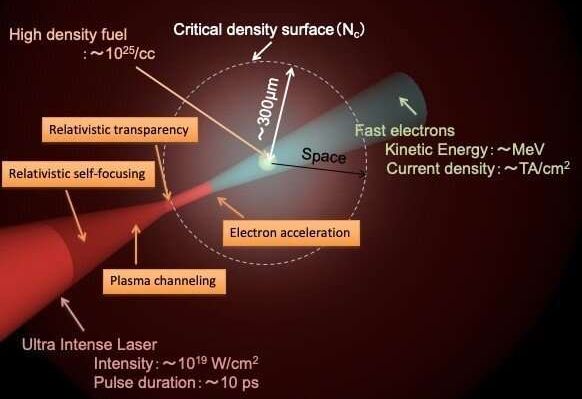Jan 7, 2020
Using relativistic effects for laser fusion: A new approach for clean power
Posted by Quinn Sena in category: nuclear energy
A team of researchers at Osaka University has investigated a new method for generating nuclear fusion power, showing that the relativistic effect of ultra-intense laser light improves upon current “fast ignition” methods in laser-fusion research to heat the fuel long enough to generate electrical power. These findings could provide a spark for laser fusion, ushering in a new era of carbonless energy production.
Current nuclear power uses the fission of heavy isotopes, such as uranium, into lighter elements to produce power. Yet, this fission power has major concerns, such as spent fuel disposal and the risk of meltdowns. A promising alternative to fission is nuclear fusion. Like all stars, our sun is powered by the fusion of light isotopes, notably hydrogen, into heavier elements. Fusion has many advantages over fission, including the lack of hazardous waste or risk of uncontrolled nuclear reactions.
However, getting more energy out of a fusion reaction than was put into it has remained an elusive goal. This is because hydrogen nuclei strongly repel each other, and fusion requires extreme heat and pressure conditions—like those found in the interior of the sun, for instance—to squeeze them together. One method, called “inertial confinement” uses extremely high-energy laser pulses to heat and compress a fuel pellet before it gets the chance to be blown apart. Unfortunately, this technique requires extremely precise control of the laser’s energy so that the compression shock waves all arrive at the center simultaneously.


















